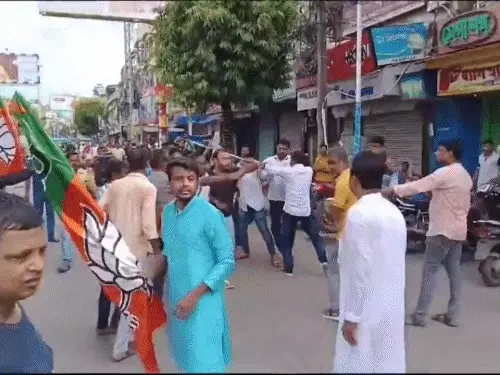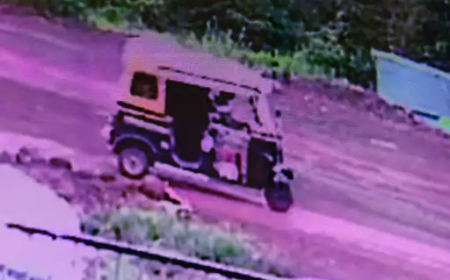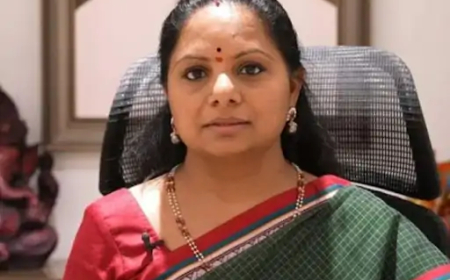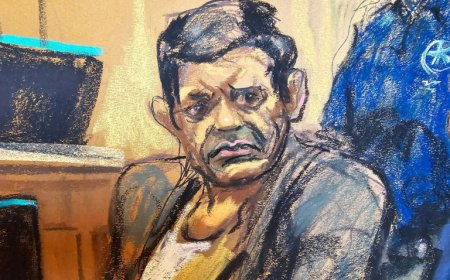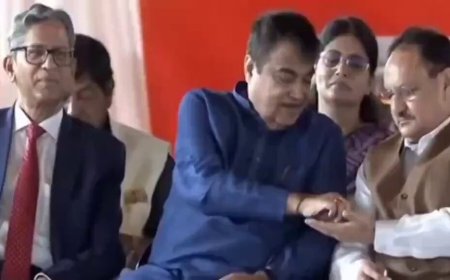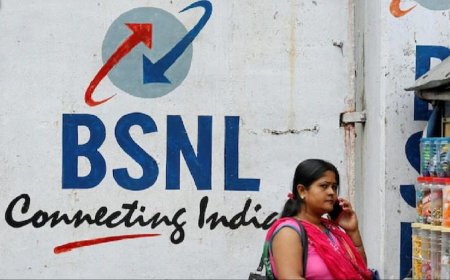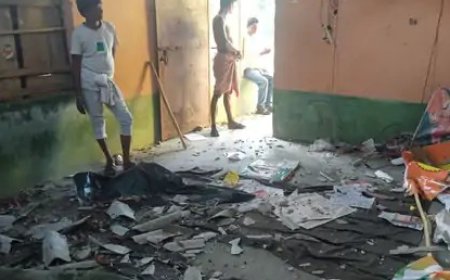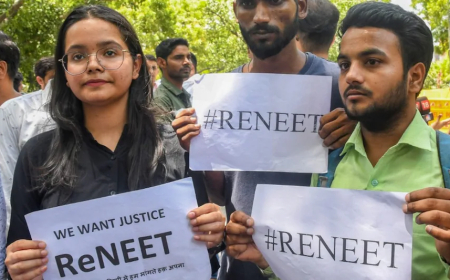Demographic
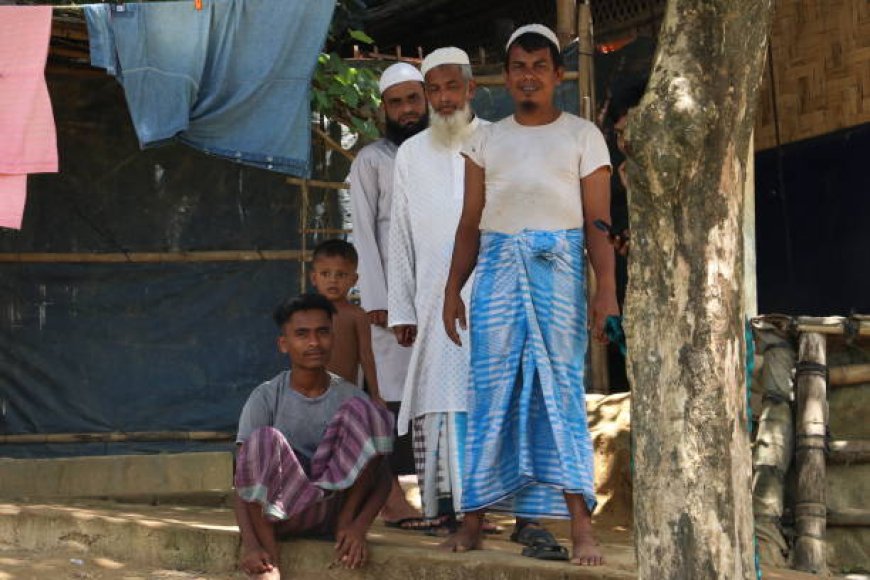
1.
Demographic
Demographics are statistics that describe populations and their characteristics. Demographic analysis is the study of a population-based on factors such as age, race, and sex.
What Are Demographics?
Demographics are statistics that describe populations and their characteristics. Demographic analysis is the study of a population-based on factors such as age, race, and sex. Demographic data refers to socioeconomic information expressed statistically, including employment, education, income, marriage rates, birth and death rates, and more.
Governments, corporations, and non-government organizations use demographics to learn more about a population's characteristics for many purposes, including policy development and economic market research. For example, a company that sells high-end RVs may want to reach people nearing or at retirement age and the percentage of those who can afford their products.
In 1947, before the partition of India, Muslims made up about 24.3% of India's population, or 94.5 million people. In 2011, the population of India was 121.09 crores, with 96.63 crores (79.8%) identifying as Hindu and 17.22 crores (14.2%) identifying as Muslim.
Hindu population share fell 7.8% between 1950-2015 in India, Muslims up 43.15%: EAC-PM paper
The data indicates that "there is a conducive environment to foster diversity in the society," the paper said
The share of the Hindu population decreased by 7.82% between 1950 and 2015 in India, while that of Muslims increased by 43.15%, suggesting that there is a conducive environment in the country to foster diversity, said a recent working paper by the Economic Advisory Council to the Prime Minister (EAC-PM).
The report pointed out that in keeping with the global trends of declining majority, India too has witnessed a reduction in the share of the majority religious denomination by 7.82%.
The paper titled 'Share of Religious Minorities: A Cross-Country Analysis (1950-2015)' further said the share of Jains in the population of India decreased from 0.45% in 1950 to 0.36% in 2015.
Projected population of Muslims in 2023 to stand at 19.75 crore: Govt in Lok Sabha
The paper titled 'Share of Religious Minorities: A Cross-Country Analysis (1950-2015)' further said the share of Jains in the population of India decreased from 0.45% in 1950 to 0.36% in 2015.
"... The share of the majority Hindu population decreased by 7.82% between 1950 and 2015 (from 84.68% to 78.06%). The share of Muslim population in 1950 was 9.84% and increased to 14.09% in 2015 — a 43.15% increase in their share," said the paper prepared by a team led by Shamika Ravi, member, EAC-PM.
Christians up 5.38%
According to the paper, the share of Christian population rose from 2.24% to 2.36% — an increase of 5.38% between 1950 and 2015.While the share of Sikh population increased from 1.24% in 1950 to 1.85% in 2015 — a 6.58% rise in their share, the share of the Parsi population in India witnessed a stark 85% decline, reducing from 0.03% share in 1950 to 0.004% in 2015.
India is home for Hinduism where close to 97 Crores Hindus reside. In India, out of total population of 121 crores 79.8% are Hindus. Population Growth rate of Hindusim in the last decade (2001-2011) stood at 16.8 % from previous figure of 19.92 %. Hinduism is followed majority by all states except Manipur, Arunachal Pradesh, Meghalaya, Nagaland, Mizoram (Christianity Dominated), Punjab (Sikhism Dominated), Jammu & Kashmir and Lakshadweep(Islam Dominated).
Muslim Population in India
Muslims in India are about 17.22 Crores i.e. 14.2 % of total population of India follows Islam. India is home to close to 11% of total Muslims Population of World. While its claimed that India has more Muslims than Pakistan, its not true statically. India has third highest Muslim Population after Indonesia and Pakistan. Muslims makes up majority in UT Lakshadweep and Jammu & Kashmir while it population is substantial states of Assam, West Bengal, Kerala and Uttar Pradesh.
Christian Population in India
In India, Christian Population is 2.78 Crores as per latest figure of 2011 Census which is about 2.3% of total Indian Population. Decadal Growth rate of Christianity fell from 22.52 % to 15.5% in 2001-2011. Christianity is dominant religion in North East states of Nagaland, Mizoram, Meghalaya and Manipur while they make substantial population in states of Arunachal Pradesh, Kerala, Tamil Nadu, Goa and Andaman Nicobar Islands.
Sikh Population in India
India has Sikh Population of 2.08 crores as per latest figures of 2011 census. The Growth rate of Sikhism fell down to 8.4 % from previous figure of 16.98 %. Sikhism is dominated religion in state of Punjab while it has some impact in Haryana, Delhi NCR, Rajasthan and Uttarakhand.
Approximately 84 lakhs Buddhist reside in India who makes up 0.7% of Indian Population. Growth rate of Buddhism has fell down from 22.83 % to just 6.1 % as per latest figures of 2011 census. Most of Buddhist are Dalits who converted from Hinduism due to discrimination in Hindu Caste System. Buddhist are concentrated in state of Maharashtra which makes 75% of total Buddhist Population and 6% of total Maharashtra Population.
Jain Population in India
India is home to 45 lakhs Jainism follower. While Jains Population is just 0.4% of Indian Population, its impact on Indian Economy remains high. It's believed that Jains are most educated and wealthy community in India and therefore it maintains its impact on politics and business of India. Most of Jains belongs to business Community and live in states of Maharashtra, Rajasthan, Madhya Pradesh, Gujarat, Karnataka and Delhi NCR.
How are 'Jamai Tola' growing rapidly in Jharkhand? Decreasing number of tribals and connection with Bangladeshi infiltrators

Pakur, Jharkhand, adjacent to the border of Bengal, where a strange game is going on in the name of son-in-law. In some areas of Jharkhand bordering Bangladesh, some Jamais have become so established that the demography of the entire area has changed. So many Jamai Rajas have come and settled here that the area has been given a name. Jamai Tola, how the game of alleged land jihad is going on in these Jamai Tolas and how the Jamai Rajas who came from Bangladesh are playing the game. We tell you in this report.
Sunita Tudu, who lives in Pakur district, comes from the Santhal tribe. She is married to Shamshul Ansari. Similarly, another woman Sakina Hansda's earlier name was Monica Hansda. She changed her name after marrying Azad Ansari. We are not just telling the identity of these two women and their family, but there is a big game hidden in their names and identities in Jharkhand, bordering Bangladesh. Which has been named 'Zameen Jihad' of son-in-law
There is news that people from Bangladesh come across the border to infiltrate into India and then trap the tribal women of Jharkhand in their love and marry them and become their son-in-law. Jamai Babu does not stop here but after this the game of so called land jihad starts. Earlier, tribals used to live in slums in this area. This area was once tribal dominated. But now there are permanent houses there and there are mosques at some distance. With this the area has been named Jamai Tola.
Tribals decreased in Santhal, Muslims increased!
In Santhal Pargana, the population of tribals in 1951 was 44.66 percent. In 2011, tribal population decreased to 28.11 percent. At the same time, the population of Muslims increased from 9.44 to 22.73 percent. In all these six districts of Santhal Pargana, the population has increased by an average of 7 to 8 lakhs. In which the Muslim population has increased very rapidly.
It is difficult to estimate at what level the game of Jamai Babu is going on in Jharkhand, adjacent to Bangladesh, but it can definitely be said that many Jamai Tolas have formed one after the other in the area. Former Pakur MLA Beni Prasad Gupta says, there is not even a single village left where there are tribals. The infiltrators took control by driving away the tribals. An example of this is Kitajhod, Ramchandrapur where now there are only Muslims. The entire demography there has been
Why Bengal’s Murshidabad and Malda are India’s most dangerous districts today
During Partition, there was a strong case for Muslim-majority Murshidabad to be part of Bangladesh and Hindu-majority Khulna to be in India. However, because of their respective geographical quirks, the reverse happened. In 1947, the Hindu population of Khulna was 52 percent. It now stands at 11 percent.
In Murshidabad, however, the Muslim population has swelled to 67 percent at last count. Neighbouring Malda has more than 51 percent Muslims.
Pamphlets recovered from local Al Qaeda operatives have shown that these two districts are part of Al Qaeda’s plan to create a greater Bangla merged with Bangladesh and some parts of Assam and Jharkhand. In their scheme of things, integrating these areas into an Islamic nation gives contiguity to the green arc of the Islamic world from sub-Saharan Africa to Arabia, Persia, central Asia, Pakistan, Jammu-Kashmir-Ladakh, China’s Xinjiang, Bangladesh, Indonesia and Malaysia.
Murshidabad saw the first gratuitous wave of anti-Citizenship Amendment Act (CAA) violence, with entire trains, stations, and hundreds of buses, trucks and cars burnt to the ground.
Mullahs have started objecting to Bengal’s core cultural celebrations like Durga Puja and Saraswati puja. They issued a fatwa against young girls playing football in Murshidabad. The district is a smuggling hub for explosives, narcotics and cattle. In 2018, for instance, 98 kg of bomb material was seized on its way to extremist groups in Bangladesh.
When demography changes, it poses a threat to the society. How the production takes place. You can see the biggest example of the way Bangladeshis and Rohingyas are illegally entering India and spoiling the social fabric of India. The way crime is increasing and the way it becomes very difficult to trace and catch criminals after committing crimes and committing robberies, it becomes very difficult to catch crimes. The biggest reason for this is that they are not registered citizens, where can they go and hide, they can change their identity, they can get a new identity made for a few rupees, so in this way, it is very difficult to catch them and put them behind the bars.
When demography changes, there is a threat to employment, especially small jobs are at risk. Small jobs are for those who are poor, there are marginal laborers and small jobs work as ready-made jobs by replacing them. The people who have come illegally are Bangladesh itself and the Rohingyas take their place and remove them from there on the strength of their numbers. Those who are already working are replaced by them and they work in cash, hence it becomes very difficult to identify them, hence the small jobs that are there are gradually being taken over by illegal immigrants and Bangladeshis and Rohingyas. is being taken over And due to this, the pressure on the population of India is increasing, our people are becoming unemployed due to the loss of their jobs, this increases the pressure on the government, the pressure on the society increases and new jobs are not being created at such a fast pace as If their jobs are being lost then the demographic change that happens illegally will also affect their employment.
The way Bangladeshi Rohini are being settled around the security establishments of India to change the demography, you can see an example of this in Nagrota in Jammu. You will find a mausoleum somewhere near the gate of all the security establishments or somewhere else. He keeps a complete watch on whether Rohingyas or illegally settled Bangladeshi settlements will be found ahead of them. It keeps a close watch on the movements of our security agencies, on the movements of our security forces, which can easily be sent to the enemy at any time. Therefore, whenever there is a demographic change, it is reported to our establishment. There is a lot of danger to him, he can be attacked at any time. Many of his security establishments in Jammu have been attacked by terrorists.
Solutions
The measures to stop demographic change are also very simple. If the Government of India takes action on this, then wherever the demographic change is taking place, the Indian Government can keep that part under its direct control, like Kashmir is under the direct control of the Indian Government. By dividing them into parts, the Kashmiri Hindus who were displaced can be settled in one part and the Muslim population can be accommodated in the other part. At the same time, the demography is changing as fast as in Jharkhand and Bengal, bordering Bangladesh. The Government of India can directly control it and can establish a part of the Hindus who have come from Bengal, whose demography, which has now become uncontrolled, can be controlled there and by making it a special enclave, Hindus can settle in those places. can be settled, their security can be provided and the situation which is currently uncontrolled in Bangladesh Taking advantage of this, the Indian government should occupy some part of Bangladesh and create Hindu enclaves there so that the number of Hindus can be controlled and saved and the few Hindu children can be settled in such districts as Murshidabad and Malda. Where there will be an equal number of Hindus, it will take time for the demographic change to happen. And the number of Hindus will increase and at the same time those Bangladeshis and Rohingyas who are living illegally in India should be taken action against by bringing NRC immediately and the four to five crore Bangladeshis who are living in India should be pushed back to Bangladesh so that There is no other way to control the rapid increase in population here, the only solution is to bring NRC and identify those who are living here illegally and send them back to Bangladesh as soon as possible.
And the Hindus of Bangladesh can be brought here and settled here or Bangladesh can be divided into pieces and Hindus can be separated into Jharkhand which has rapidly established the son-in-law. The biggest example of how toll can be destroyed is that all those who are living there illegally, their marriages should be canceled and all the land they have got in their name should be canceled and such a law should be made. so that it can be implemented in the entire country
And for winning illegally, Aadhar Card, PAN Card is Voter Card, they should be given 10 to 15 years of imprisonment and their assistants who are taking money from them and making these papers illegally should definitely be given life imprisonment so that Strict laws and timely steps taken, no one can stop the Government of India from moving forward, otherwise, as fast as Kashmir, Bengal and Kerala have gone out of our hands, other states can also be taken out of our hands.
Demographic
Demographics are statistics that describe populations and their characteristics. Demographic analysis is the study of a population-based on factors such as age, race, and sex.
What Are Demographics?
Demographics are statistics that describe populations and their characteristics. Demographic analysis is the study of a population-based on factors such as age, race, and sex. Demographic data refers to socioeconomic information expressed statistically, including employment, education, income, marriage rates, birth and death rates, and more.
Governments, corporations, and non-government organizations use demographics to learn more about a population's characteristics for many purposes, including policy development and economic market research. For example, a company that sells high-end RVs may want to reach people nearing or at retirement age and the percentage of those who can afford their products.
In 1947, before the partition of India, Muslims made up about 24.3% of India's population, or 94.5 million people. In 2011, the population of India was 121.09 crores, with 96.63 crores (79.8%) identifying as Hindu and 17.22 crores (14.2%) identifying as Muslim.
Hindu population share fell 7.8% between 1950-2015 in India, Muslims up 43.15%: EAC-PM paper
The data indicates that "there is a conducive environment to foster diversity in the society," the paper said
The share of the Hindu population decreased by 7.82% between 1950 and 2015 in India, while that of Muslims increased by 43.15%, suggesting that there is a conducive environment in the country to foster diversity, said a recent working paper by the Economic Advisory Council to the Prime Minister (EAC-PM).
The report pointed out that in keeping with the global trends of declining majority, India too has witnessed a reduction in the share of the majority religious denomination by 7.82%.
The paper titled 'Share of Religious Minorities: A Cross-Country Analysis (1950-2015)' further said the share of Jains in the population of India decreased from 0.45% in 1950 to 0.36% in 2015.
Projected population of Muslims in 2023 to stand at 19.75 crore: Govt in Lok Sabha
The paper titled 'Share of Religious Minorities: A Cross-Country Analysis (1950-2015)' further said the share of Jains in the population of India decreased from 0.45% in 1950 to 0.36% in 2015.
"... The share of the majority Hindu population decreased by 7.82% between 1950 and 2015 (from 84.68% to 78.06%). The share of Muslim population in 1950 was 9.84% and increased to 14.09% in 2015 — a 43.15% increase in their share," said the paper prepared by a team led by Shamika Ravi, member, EAC-PM.
Christians up 5.38%
According to the paper, the share of Christian population rose from 2.24% to 2.36% — an increase of 5.38% between 1950 and 2015.While the share of Sikh population increased from 1.24% in 1950 to 1.85% in 2015 — a 6.58% rise in their share, the share of the Parsi population in India witnessed a stark 85% decline, reducing from 0.03% share in 1950 to 0.004% in 2015.
India is home for Hinduism where close to 97 Crores Hindus reside. In India, out of total population of 121 crores 79.8% are Hindus. Population Growth rate of Hindusim in the last decade (2001-2011) stood at 16.8 % from previous figure of 19.92 %. Hinduism is followed majority by all states except Manipur, Arunachal Pradesh, Meghalaya, Nagaland, Mizoram (Christianity Dominated), Punjab (Sikhism Dominated), Jammu & Kashmir and Lakshadweep(Islam Dominated).
Muslim Population in India
Muslims in India are about 17.22 Crores i.e. 14.2 % of total population of India follows Islam. India is home to close to 11% of total Muslims Population of World. While its claimed that India has more Muslims than Pakistan, its not true statically. India has third highest Muslim Population after Indonesia and Pakistan. Muslims makes up majority in UT Lakshadweep and Jammu & Kashmir while it population is substantial states of Assam, West Bengal, Kerala and Uttar Pradesh.
Christian Population in India
In India, Christian Population is 2.78 Crores as per latest figure of 2011 Census which is about 2.3% of total Indian Population. Decadal Growth rate of Christianity fell from 22.52 % to 15.5% in 2001-2011. Christianity is dominant religion in North East states of Nagaland, Mizoram, Meghalaya and Manipur while they make substantial population in states of Arunachal Pradesh, Kerala, Tamil Nadu, Goa and Andaman Nicobar Islands.
Sikh Population in India
India has Sikh Population of 2.08 crores as per latest figures of 2011 census. The Growth rate of Sikhism fell down to 8.4 % from previous figure of 16.98 %. Sikhism is dominated religion in state of Punjab while it has some impact in Haryana, Delhi NCR, Rajasthan and Uttarakhand.
Approximately 84 lakhs Buddhist reside in India who makes up 0.7% of Indian Population. Growth rate of Buddhism has fell down from 22.83 % to just 6.1 % as per latest figures of 2011 census. Most of Buddhist are Dalits who converted from Hinduism due to discrimination in Hindu Caste System. Buddhist are concentrated in state of Maharashtra which makes 75% of total Buddhist Population and 6% of total Maharashtra Population.
Jain Population in India
India is home to 45 lakhs Jainism follower. While Jains Population is just 0.4% of Indian Population, its impact on Indian Economy remains high. It's believed that Jains are most educated and wealthy community in India and therefore it maintains its impact on politics and business of India. Most of Jains belongs to business Community and live in states of Maharashtra, Rajasthan, Madhya Pradesh, Gujarat, Karnataka and Delhi NCR.
How are 'Jamai Tola' growing rapidly in Jharkhand? Decreasing number of tribals and connection with Bangladeshi infiltrators

Pakur, Jharkhand, adjacent to the border of Bengal, where a strange game is going on in the name of son-in-law. In some areas of Jharkhand bordering Bangladesh, some Jamais have become so established that the demography of the entire area has changed. So many Jamai Rajas have come and settled here that the area has been given a name. Jamai Tola, how the game of alleged land jihad is going on in these Jamai Tolas and how the Jamai Rajas who came from Bangladesh are playing the game. We tell you in this report.
Sunita Tudu, who lives in Pakur district, comes from the Santhal tribe. She is married to Shamshul Ansari. Similarly, another woman Sakina Hansda's earlier name was Monica Hansda. She changed her name after marrying Azad Ansari. We are not just telling the identity of these two women and their family, but there is a big game hidden in their names and identities in Jharkhand, bordering Bangladesh. Which has been named 'Zameen Jihad' of son-in-law
There is news that people from Bangladesh come across the border to infiltrate into India and then trap the tribal women of Jharkhand in their love and marry them and become their son-in-law. Jamai Babu does not stop here but after this the game of so called land jihad starts. Earlier, tribals used to live in slums in this area. This area was once tribal dominated. But now there are permanent houses there and there are mosques at some distance. With this the area has been named Jamai Tola.
Tribals decreased in Santhal, Muslims increased!
In Santhal Pargana, the population of tribals in 1951 was 44.66 percent. In 2011, tribal population decreased to 28.11 percent. At the same time, the population of Muslims increased from 9.44 to 22.73 percent. In all these six districts of Santhal Pargana, the population has increased by an average of 7 to 8 lakhs. In which the Muslim population has increased very rapidly.
It is difficult to estimate at what level the game of Jamai Babu is going on in Jharkhand, adjacent to Bangladesh, but it can definitely be said that many Jamai Tolas have formed one after the other in the area. Former Pakur MLA Beni Prasad Gupta says, there is not even a single village left where there are tribals. The infiltrators took control by driving away the tribals. An example of this is Kitajhod, Ramchandrapur where now there are only Muslims. The entire demography there has been
Why Bengal’s Murshidabad and Malda are India’s most dangerous districts today
During Partition, there was a strong case for Muslim-majority Murshidabad to be part of Bangladesh and Hindu-majority Khulna to be in India. However, because of their respective geographical quirks, the reverse happened. In 1947, the Hindu population of Khulna was 52 percent. It now stands at 11 percent.
In Murshidabad, however, the Muslim population has swelled to 67 percent at last count. Neighbouring Malda has more than 51 percent Muslims.
Pamphlets recovered from local Al Qaeda operatives have shown that these two districts are part of Al Qaeda’s plan to create a greater Bangla merged with Bangladesh and some parts of Assam and Jharkhand. In their scheme of things, integrating these areas into an Islamic nation gives contiguity to the green arc of the Islamic world from sub-Saharan Africa to Arabia, Persia, central Asia, Pakistan, Jammu-Kashmir-Ladakh, China’s Xinjiang, Bangladesh, Indonesia and Malaysia.
Murshidabad saw the first gratuitous wave of anti-Citizenship Amendment Act (CAA) violence, with entire trains, stations, and hundreds of buses, trucks and cars burnt to the ground.
Mullahs have started objecting to Bengal’s core cultural celebrations like Durga Puja and Saraswati puja. They issued a fatwa against young girls playing football in Murshidabad. The district is a smuggling hub for explosives, narcotics and cattle. In 2018, for instance, 98 kg of bomb material was seized on its way to extremist groups in Bangladesh.
When demography changes, it poses a threat to the society. How the production takes place. You can see the biggest example of the way Bangladeshis and Rohingyas are illegally entering India and spoiling the social fabric of India. The way crime is increasing and the way it becomes very difficult to trace and catch criminals after committing crimes and committing robberies, it becomes very difficult to catch crimes. The biggest reason for this is that they are not registered citizens, where can they go and hide, they can change their identity, they can get a new identity made for a few rupees, so in this way, it is very difficult to catch them and put them behind the bars.
When demography changes, there is a threat to employment, especially small jobs are at risk. Small jobs are for those who are poor, there are marginal laborers and small jobs work as ready-made jobs by replacing them. The people who have come illegally are Bangladesh itself and the Rohingyas take their place and remove them from there on the strength of their numbers. Those who are already working are replaced by them and they work in cash, hence it becomes very difficult to identify them, hence the small jobs that are there are gradually being taken over by illegal immigrants and Bangladeshis and Rohingyas. is being taken over And due to this, the pressure on the population of India is increasing, our people are becoming unemployed due to the loss of their jobs, this increases the pressure on the government, the pressure on the society increases and new jobs are not being created at such a fast pace as If their jobs are being lost then the demographic change that happens illegally will also affect their employment.
The way Bangladeshi Rohini are being settled around the security establishments of India to change the demography, you can see an example of this in Nagrota in Jammu. You will find a mausoleum somewhere near the gate of all the security establishments or somewhere else. He keeps a complete watch on whether Rohingyas or illegally settled Bangladeshi settlements will be found ahead of them. It keeps a close watch on the movements of our security agencies, on the movements of our security forces, which can easily be sent to the enemy at any time. Therefore, whenever there is a demographic change, it is reported to our establishment. There is a lot of danger to him, he can be attacked at any time. Many of his security establishments in Jammu have been attacked by terrorists.
Solutions
The measures to stop demographic change are also very simple. If the Government of India takes action on this, then wherever the demographic change is taking place, the Indian Government can keep that part under its direct control, like Kashmir is under the direct control of the Indian Government. By dividing them into parts, the Kashmiri Hindus who were displaced can be settled in one part and the Muslim population can be accommodated in the other part. At the same time, the demography is changing as fast as in Jharkhand and Bengal, bordering Bangladesh. The Government of India can directly control it and can establish a part of the Hindus who have come from Bengal, whose demography, which has now become uncontrolled, can be controlled there and by making it a special enclave, Hindus can settle in those places. can be settled, their security can be provided and the situation which is currently uncontrolled in Bangladesh Taking advantage of this, the Indian government should occupy some part of Bangladesh and create Hindu enclaves there so that the number of Hindus can be controlled and saved and the few Hindu children can be settled in such districts as Murshidabad and Malda. Where there will be an equal number of Hindus, it will take time for the demographic change to happen. And the number of Hindus will increase and at the same time those Bangladeshis and Rohingyas who are living illegally in India should be taken action against by bringing NRC immediately and the four to five crore Bangladeshis who are living in India should be pushed back to Bangladesh so that There is no other way to control the rapid increase in population here, the only solution is to bring NRC and identify those who are living here illegally and send them back to Bangladesh as soon as possible.
And the Hindus of Bangladesh can be brought here and settled here or Bangladesh can be divided into pieces and Hindus can be separated into Jharkhand which has rapidly established the son-in-law. The biggest example of how toll can be destroyed is that all those who are living there illegally, their marriages should be canceled and all the land they have got in their name should be canceled and such a law should be made. so that it can be implemented in the entire country
And for winning illegally, Aadhar Card, PAN Card is Voter Card, they should be given 10 to 15 years of imprisonment and their assistants who are taking money from them and making these papers illegally should definitely be given life imprisonment so that Strict laws and timely steps taken, no one can stop the Government of India from moving forward, otherwise, as fast as Kashmir, Bengal and Kerala have gone out of our hands, other states can also be taken out of our hands.
What's Your Reaction?







